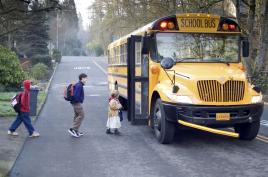Preparing for the End of ESSER Funds

With apologies to Boyz II Men, the popular boy band from the 1990’s, it’s only a matter of months now until federal assistance under the Department of Education’s Elementary and Secondary School Emergency Relief (ESSER) fund will come to “the end of the road.” According to a recent blog post from the Council of Chief State School Officers (CCSSO), however, some states are taking steps to ensure that this funding leaves a lasting legacy.
States and school districts nationwide received nearly $190 billion to support relief and recovery in K-12 schools through the ESSER fund. ESSER dollars were allocated in three different tranches, and states and districts have until Sept. 30 to obligate the final round of remaining funds.
Although ESSER was designed to be a one-time emergency relief program that would not be renewed, CCSSO emphasized that student needs in the wake of the COVID-19 pandemic persist, and continued support is needed to fully close learning gaps to address student and educator well-being. Further, it pointed out that students could continue to benefit from recovery innovations outside of a pandemic environment.
States are currently working to sustain important pandemic recovery activities supported by ESSER funds. Among these include the following:
- North Carolina has developed an Operation Polaris vision that outlines seven priority areas for the state’s K-12 education system. This vision is the foundation for how the state education agency conducts its business and supports districts and serves as a lodestar to guide practitioners in the field. To support local leaders with setting priorities, the agency’s Office of Learning Recovery and Acceleration unveiled its ESSER Funding Cliff Toolkit that supports data-driven financial decisions post-ESSER.
- Connecticut has launched the Center for Connecticut Education Research Collaboration using ESSER set-aside funds to convene education researchers from colleges and universities in the state and evaluate the impact of state-led investments in summer enrichment, home visits, behavioral health, remote learning and more.
- Louisiana’s ESSER Investments + Outcomes dashboard shows how district-level spending aligns with need based on student progress towards academic goals.
- Nebraska used one-time ESSER funds to advance its statewide focus on high-quality instructional materials in math by working with Educational Service Units through the Math Acceleration Project to provide curriculum-based professional learning to teachers in their service areas.
- New Jersey developed a Maximizing Federal Funds website to help districts prioritize funding based on their students’ needs. The website is organized by types of student needs and shows activities that are allowable uses of ESSER funds and how districts can strategically use other federal funds to sustain the program once the emergency funds run out.
Other states are also moving to minimize barriers to allowable uses of funds and are combining their resources to continue to provide services enabled through ESSER. We support these states’ forward-looking approaches, because come September and the ESSER obligation period comes to a close, states may be looking back to this financial assistance singing another Boyz II Men classic, “It’s So Hard to Say Goodbye to Yesterday.”
Join us for our following Thompson Grants events:
Thompson Grants Workshop: Procurement | May 23, 2024 | Virtual Event
Federal Grants Forum | June 26-27, 2024 | Columbus, Ohio



